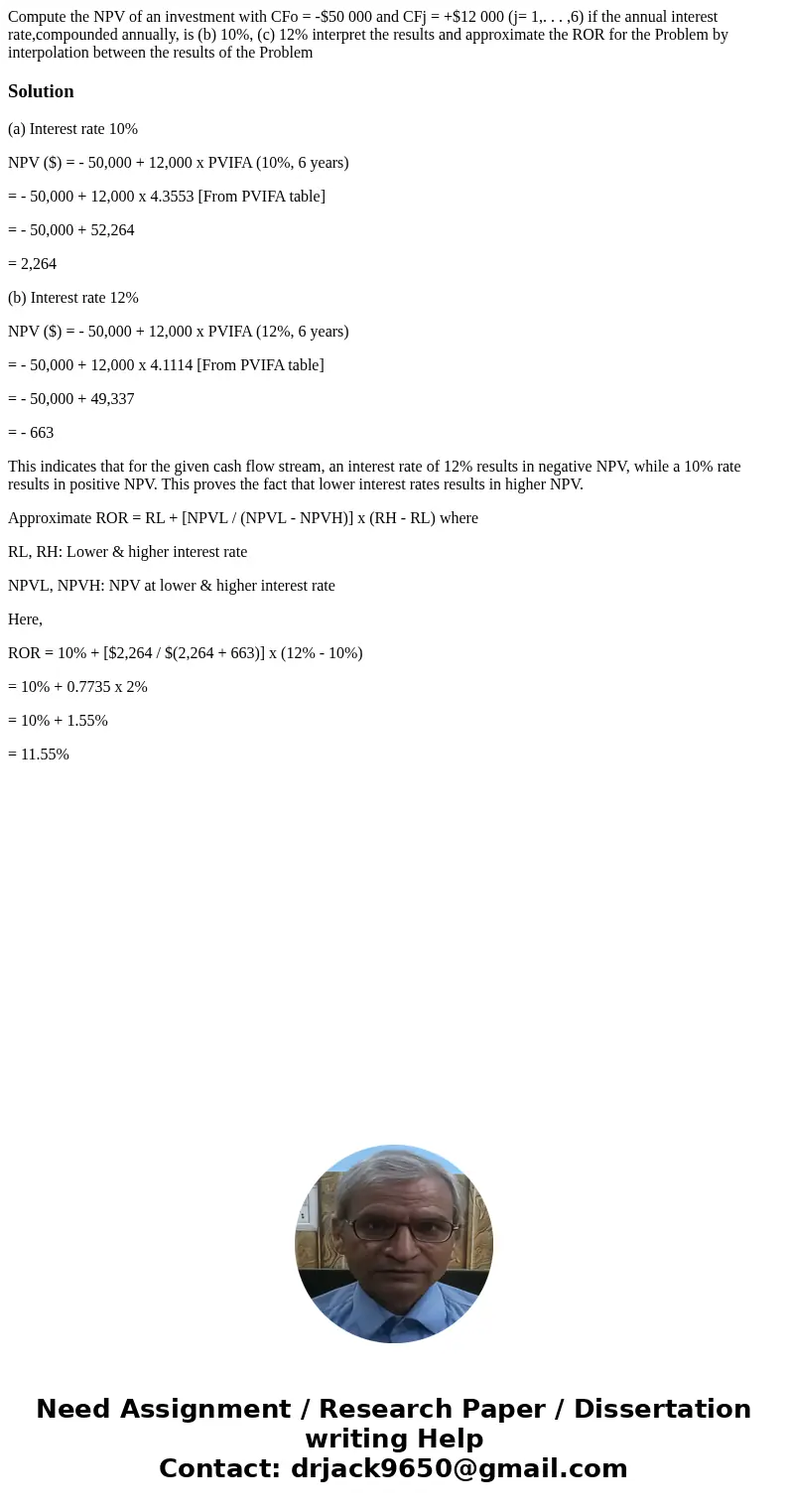Compute the NPV of an investment with CFo 50 000 and CFj 1
Compute the NPV of an investment with CFo = -$50 000 and CFj = +$12 000 (j= 1,. . . ,6) if the annual interest rate,compounded annually, is (b) 10%, (c) 12% interpret the results and approximate the ROR for the Problem by interpolation between the results of the Problem
Solution
(a) Interest rate 10%
NPV ($) = - 50,000 + 12,000 x PVIFA (10%, 6 years)
= - 50,000 + 12,000 x 4.3553 [From PVIFA table]
= - 50,000 + 52,264
= 2,264
(b) Interest rate 12%
NPV ($) = - 50,000 + 12,000 x PVIFA (12%, 6 years)
= - 50,000 + 12,000 x 4.1114 [From PVIFA table]
= - 50,000 + 49,337
= - 663
This indicates that for the given cash flow stream, an interest rate of 12% results in negative NPV, while a 10% rate results in positive NPV. This proves the fact that lower interest rates results in higher NPV.
Approximate ROR = RL + [NPVL / (NPVL - NPVH)] x (RH - RL) where
RL, RH: Lower & higher interest rate
NPVL, NPVH: NPV at lower & higher interest rate
Here,
ROR = 10% + [$2,264 / $(2,264 + 663)] x (12% - 10%)
= 10% + 0.7735 x 2%
= 10% + 1.55%
= 11.55%

 Homework Sourse
Homework Sourse